This post on Buenos Aires has taken me a long time to write and was actually one I was and wasn’t looking forward to writing. I was, because I have been so fascinated by Argentina’s history and was anxious to share it with my readers. But at the same time I had written so much about Buenos Aires that I was just flat out tired of writing about it.
What also got in the way? It bothers me to write outside of the timeline in which an event has happened. It needs to be ok to go to Uruguay in my writing and then back to Buenos Aires. Do the readers even care or is it more important to get the content out? I intellectually know it’s the timeliness of content that matters, I just have to get around this roadblock. And as well, I should be writing several posts simultaneously, again something that is hard for me but in fact lends to better content, revisions and ultimately the final publication.
So here we go, I promise it is interesting – a little bit about Argentina’s history and how it pertains to its first and second most famous avenidas, Avenida 9 de Julio and Avenida de Mayo which connects the Plaza de Mayo/Presidential Palace and the Congressional Plaza, also the street on which I stayed. If you like history which I do or even if you just want to get a better feel for a city and its well known areas then I would implore you to take a city tour of some sort and the best ones – the free city tours that many cities offer just as Gaston and Sol offer with their two (2) Buenos Aires Free City Tours – www.bafreetour.com. The morning tour is about history and politics and the second is the aristocratic Buenos Aires tour; both fantastic and very different from one another.
What many might not know about Buenos Aires is that it has had one of the most volatile political histories in the western hemisphere, in fact during it’s economic crisis in 2001 the country had five (5) presidents in a two week period, and the peso was so low that many could fly to Miami for a weekend but there were also five million people under the poverty level.
It’s also a country that had a hooker from Spain, Peron’s 3rd wife as its Vice President and President, for a brief period. And one of it’s most appalling laws is that abortion is still illegal. In fact, while I was there they were determining if abortion could be legalized for a mentally challenged fifteen year old who was raped by her stepfather and is now pregnant. And why might they contemplate its legalization now, for this case only? Because it was her stepfather, not for any other reason.
The tour guides in their green t-shirts begin at the Congressional Plaza at the top of the Avenida de Mayo. Its construction began in 1906 and finished in 1946 and it is one of the more beautiful buildings in the area. Many political decisions and laws are put into effect in this building but if a decision cannot be made there it then goes to the President and her three secretaries, which many Argentineans find to be ludicrous, and finally the Supreme Court. The Congress stood for political reform until of course 1976 when the military took over after sending Peron’s wife into exile back to Spain. Why is there a smiling sun on Argentina’s flag? Because the sun is the Inca’s God of Warriors (Military).
During the time of military occupation from 1976 – 1983 more than 30,000 people were killed for reasons that are simply incomprehensible, people just disappeared. Reasons such as homosexuality, men with long hair, protests in groups larger than three people, and Jews etc. So many were killed and many children were taken from their parents and often placed with the military families who killed theirs. In fact, in April of 1977 a group of 14 mothers came in protest on a Thursday at 3pm and walked around the monument in groups of two or three at the Presidential (pink) Palace, where the President resides and works from. Thirty-five years later they still meet every Thursday and from these protests came the Grandmothers of March who have reunited 105 children who were born from 1976-1983 with their birth parents/grandparents; one case mentioned in particular of a girl who found out three years ago that her “father” was in fact the man who killed her biological mother and father. She had been so brainwashed that she was proud of what her “father” had done and it took her a while to come to her senses, severing all ties with her adopted family soon thereafter.
The tour’s halfway point meets at the intersection of the Avenida de Mayo and Avenida 9 de Julio, a visually stunning avenue through the heart of Buenos Aires. It’s the widest in South America at 250m and 16 lanes across, double the width of the widest in Brazil, a fact that Argentineans are very proud of. At one end the 3D wall installation of Eva Peron speaking from the Presidential Palace balcony and in the other direction, the famous obelisk a 400-year-old monument, which represents the heart of Argentina. It is impressive and I have to admit, walking down the avenue is similar to the feeling of walking down the Champs Elysees towards the Arc de Triomphe and Eiffel Tower. It is in fact their Eiffel Tower or Statue of Liberty, a place of power and prominence and where most Argentineans can only dream of making it to; the cost of travelling to Buenos Aires from the countryside is simply too much.
Continuing down the Avenida de Mayo is the famous Café Torino with its dim lights and celebrity sightings. It is beautiful and I don’t believe we have anything like this at home but it has nothing on Rio de Janeiro’s Café Colombo. I have only had one cup of coffee in my life but it seems coffee is an art down there and heaven forbid you walk down the street with a cup in your hand, coffee here takes 1-2 hours with friends. A little coffee lingo for you coffee lovers:
Café – normal coffee, whatever that is, lol.
Café con leche – coffee with milk but is only ordered at breakfast
Courtado – like a macchiato
Carito – ¾ café and ¼ milk
Largina – ¾ milk and ¼ coffee
Submarino – the only thing I’d drink and loved is essentially a hot choclate. A cup of hot milk is served with a small submarine shaped chocolate bar – hence a submarino.
And right next to Café Torino if you want to take a cool ride down Avenida de Mayo is the Line A subway line which opened in 1913. Everything is made of wood, the light fixtures are ancient and the windows and doors still open with your hands. Can’t imagine the rate of suicide but very, very cool.
Finally, one of the coolest things for Argentineans? They have two independence days and thus two national (independence) holidays. The first being May 25th when Argentina pretended to be loyal to Spain and sent its viceroy home, quickly “electing” nine officials. The second, the 9th of July, when Spain granted its independence. Probably the only good thing about Argentina’s political history.
Loved Buenos Aires and to my final Buenos Aires post until my next visit, “adios muchacho!”

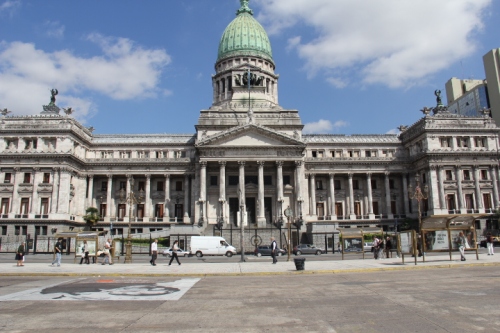
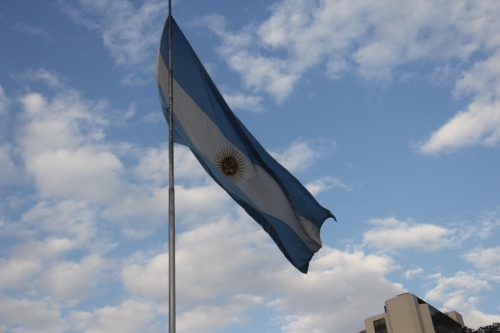
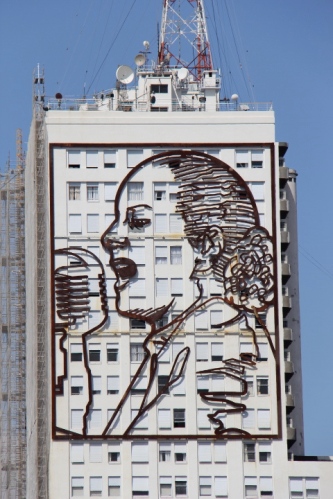
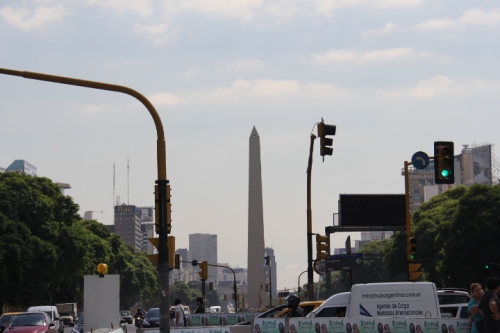
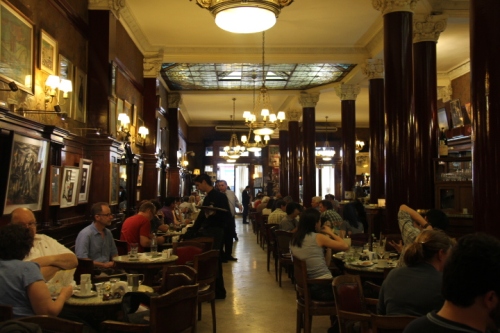
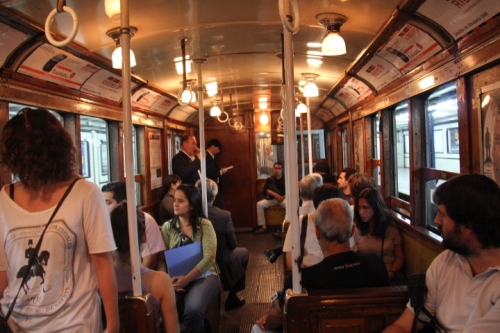
It looks like a modern city in need of a Starbucks!
BA actually has one, but only one that I saw although I’m sure there were more. In fact, a friend of mine collects Starbuck mugs from different countries and they didn’t carry them – disappointing. So unlike Toronto for example where they just opened a Starbucks kitty corner to another. Unreal.
We’re missing you.
It’s so nice to hear you again! I love your comments and photos! Cris Ghirghi and family